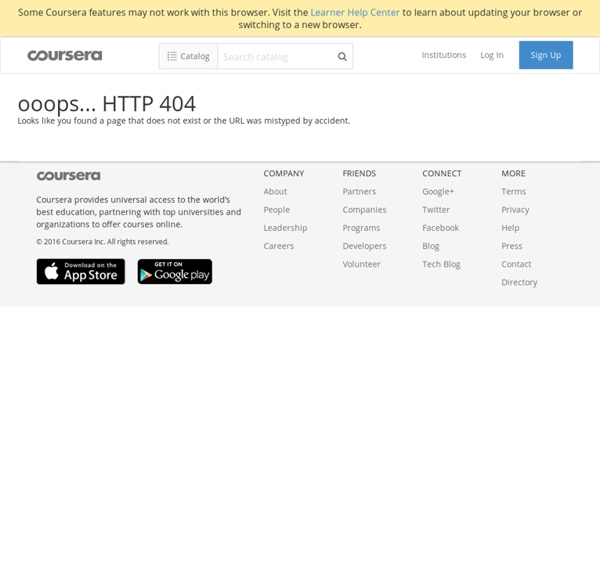



Gamification About the Course Gamification is the application of digital game design techniques to non-game contexts, such as business, education, and social impact challenges. Video games are the dominant entertainment form of modern times because they powerfully motivate behavior. Over the past few years, gamification adoption has skyrocketed. Game thinking means more than dropping in badges and leaderboards to make an activity fun or addicting. Subtitles forall video lectures available in: English, Russian (provided by Digital October), Turkish (Koc University), and Ukrainian (provided by Bionic University) Course Syllabus The course is divided into 12 units. 1. 2. 3. 4. 5. 6. 7. 8. 9. 10. 11. 12. Recommended Background This course is designed as an introduction to gamification as a business practice. Suggested Readings The course is designed to be self-contained. Course Format The class will consist of video lectures, which are between 7 and 12 minutes in length. Yes. • Who should take this course?
Intro to Statistics When does the course begin? This class is self paced. You can begin whenever you like and then follow your own pace. It’s a good idea to set goals for yourself to make sure you stick with the course. How long will the course be available? This class will always be available! How do I know if this course is for me? Take a look at the “Class Summary,” “What Should I Know,” and “What Will I Learn” sections above. Can I skip individual videos? Yes! How much does this cost? It’s completely free! What are the rules on collaboration? Collaboration is a great way to learn. Why are there so many questions? Udacity classes are a little different from traditional courses. What should I do while I’m watching the videos? Learn actively! Spell Check | Online Spellchecker Online Spell check, Grammar, and Thesaurus checking Add Spell Checking to virtually any text box on your web site. Visit www.webspellchecker.net for details. Language: English - United States is currently selected (Change) Basic Check Advanced Check Ever wonder how to spell a word? How do you spell a word? If you don't want to use our free online spell check site, there are many spell check programs out there.
Best Online Courses To Take CS50: Introduction to Computer Science CS50x is Harvard College's introduction to the intellectual enterprises of computer science and the art of programming for majors and non-majors alike, with or without prior programming experience. An entry-level course taught by David J. Malan, CS50x teaches students how to think algorithmically and solve problems efficiently. Topics include abstraction, algorithms, data structures, encapsulation, resource management, security, software engineering, and web development. Languages include C, PHP, and JavaScript plus SQL, CSS, and HTML. Students who earn a satisfactory score on 9 problem sets (i.e., programming assignments) and a final project will receive a certificate from HarvardX. Audit this Course Audit this course for free and have complete access to all the course material, activities, tests, and forums. Earn a Verified Certificate of Achievement Looking to test your mettle? Earn Harvard Credit
Brilliant toilet! In this activity, students hear about a strange restaurant recommendation. They watch a video in which Paul talks about a friend’s suggestion to visit a new restaurant in town specifically because of its brilliant toilet. But what could be so special about a toilet? Language level: Intermediate + (B1)Learner type: Teens; AdultsTime: 45 minutesActivity: Reading and speakingTopic: RestaurantsLanguage: Evaluative adjectives (brilliant, wonderful, unbelievable, great, etc.)Materials: Video; worksheet Brilliant toilet (10156 downloads) Lesson plan outline (part 1) Ask students how often they eat out. Take feedback. Write ideas on the board and invite students to add more ideas if they can. Tell students that they are going to see a video in which a man called Paul tells a story. I have a really good friend who goes to lots of new bars and likes to recommend these kinds of places. And I’m thinking, what is so great about the toilet? Note that the transcription has been altered slightly.
Premier Skills English | Viral Videos for English Language Teaching English Grammar Online - free exercises, explanations, vocabulary, dictionary and teaching materials